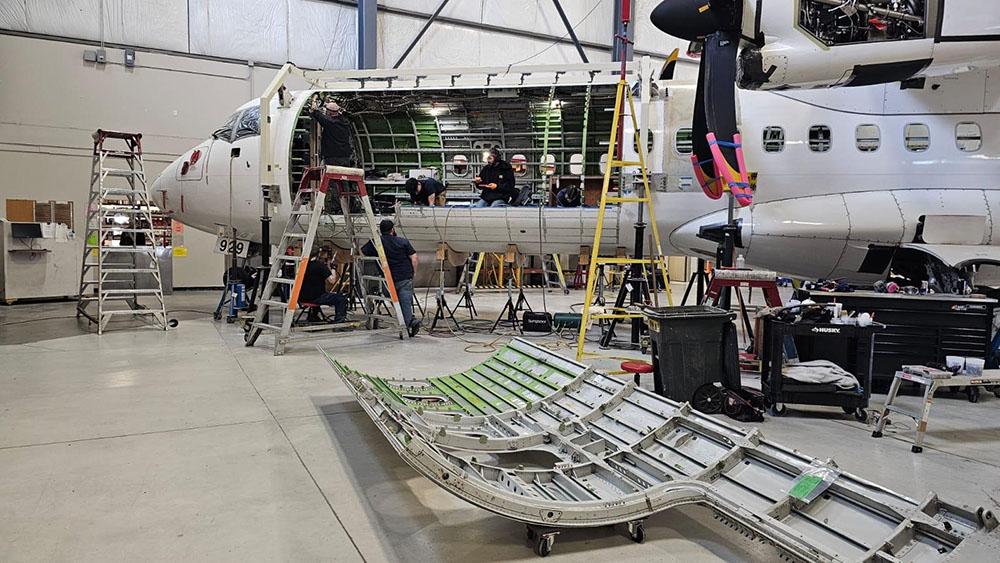
ACIA Aero Leasing will soon start converting its first ATR 72-600 freighter with a large cargo door. The work starts in August at Empire Aerospace in Hayden, Idaho.
The project was originally scheduled for 2022, but due to sustained demand on the passenger market, the 72-600—formerly operated by Air Madagascar subsidiary Tsaradia and just shy of 10 years old—will finally head for conversion. It is the first of five 72-600 passenger aircraft ACIA has acquired for conversion.
Completion and final certification of the aircraft is expected by the first quarter of 2025.
“We see very strong demand for the overall ATR 72 platform because it is the most fuel-efficient regional aircraft in its class,” says Mick Mooney, CEO of ACIA Aero Leasing.
ACIA has delivered eight ATR 72 freighters over the last 18 months, including six with large cargo doors (LCD). Mooney says the demand for the 72-600 LCD option has been supported by operators' growing requirement to renew their fleets with the latest technology.
Through its affiliate company, IPR Conversions, the ACIA Aero Capital Group owns the supplemental type certificate (STC) to convert ATR 72 and 42 passenger aircraft into bulk freighter conversions or LCDs. IPR Conversions acquired the STC from Leonardo in 2016, and ACIA has been converting ATRs into freighters ever since.
Conversions can take between 4-6 months. It takes 11,000-12,000 labor-hours to convert to an LCD freighter and 4,000-5,000 for a bulk freighter conversion, according to technical experts at ACIA.
According to the OEM, around 160 ATR freighters are in operation globally, but the outlook for used aircraft availability for potential conversions is limited. ATR attributes this to the attractiveness of the product.
The factory-built ATR 72-600F secured 30 orders and 20 options from FedEx in 2017, and it is still the sole customer for the airframe type. ATR says at least 20 have been delivered.
As the 72-500 variant becomes less available, Mooney thinks the first ATR 72-600 to undergo conversion was imminent. “It is strategic for ACIA and IPR as a group to be the first movers,” he says.
ACIA sees strong opportunities for growth in the cargo sector and it is discussing several prospects with existing customers and operators. It is also exploring new market opportunities, particularly in the Asia-Pacific region.
The lessor delivered two ATR 72-500 BFCs to Pattaya Airways in Thailand earlier this year. The startup airline plans to launch services in the fourth quarter of 2024, offering all-cargo domestic services to points in Southeast Asia. ACIA also delivered an ATR 72-212 LCD to Aerlink in Australia.
ACIA’s specific mission is taking distressed assets, challenging engineering projects and placing them on lease or sale. Through its technical and asset management department, ACIA has a powerplant division that manages over 150 engines and supports operators with engine shop visits.
It recently established an internal airworthiness department to handle the records and continuing airworthiness management for its conversions and projects and to oversee deliveries and redeliveries.
Meanwhile, its commercial team has multiple core functions, from pricing through asset acquisition to placement, risk analysis and marketing. It also identifies potential customers for the converted freighters and closing lease and sale transactions.





